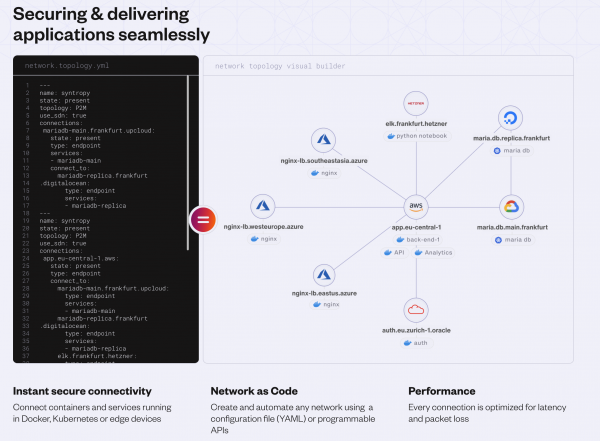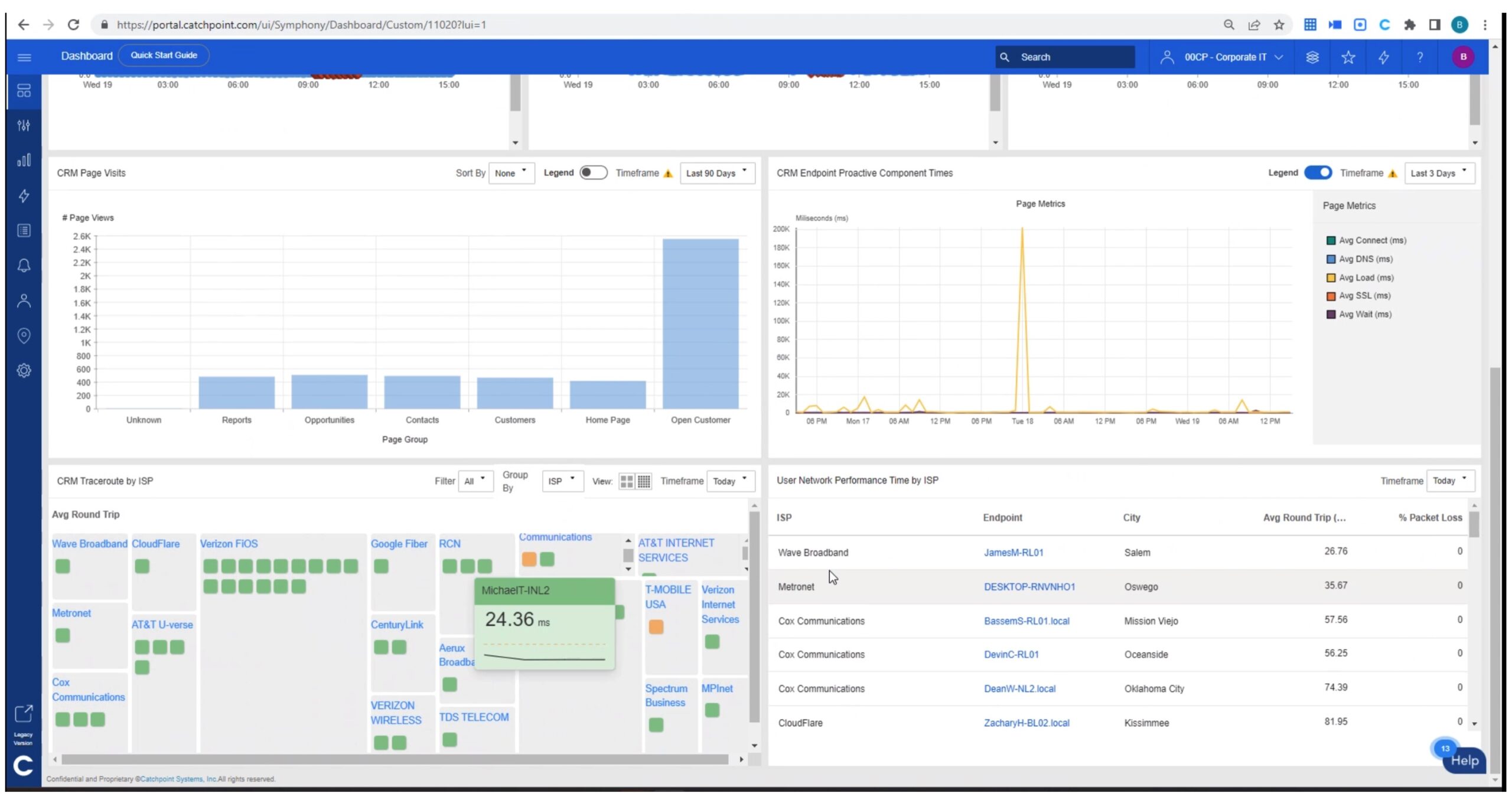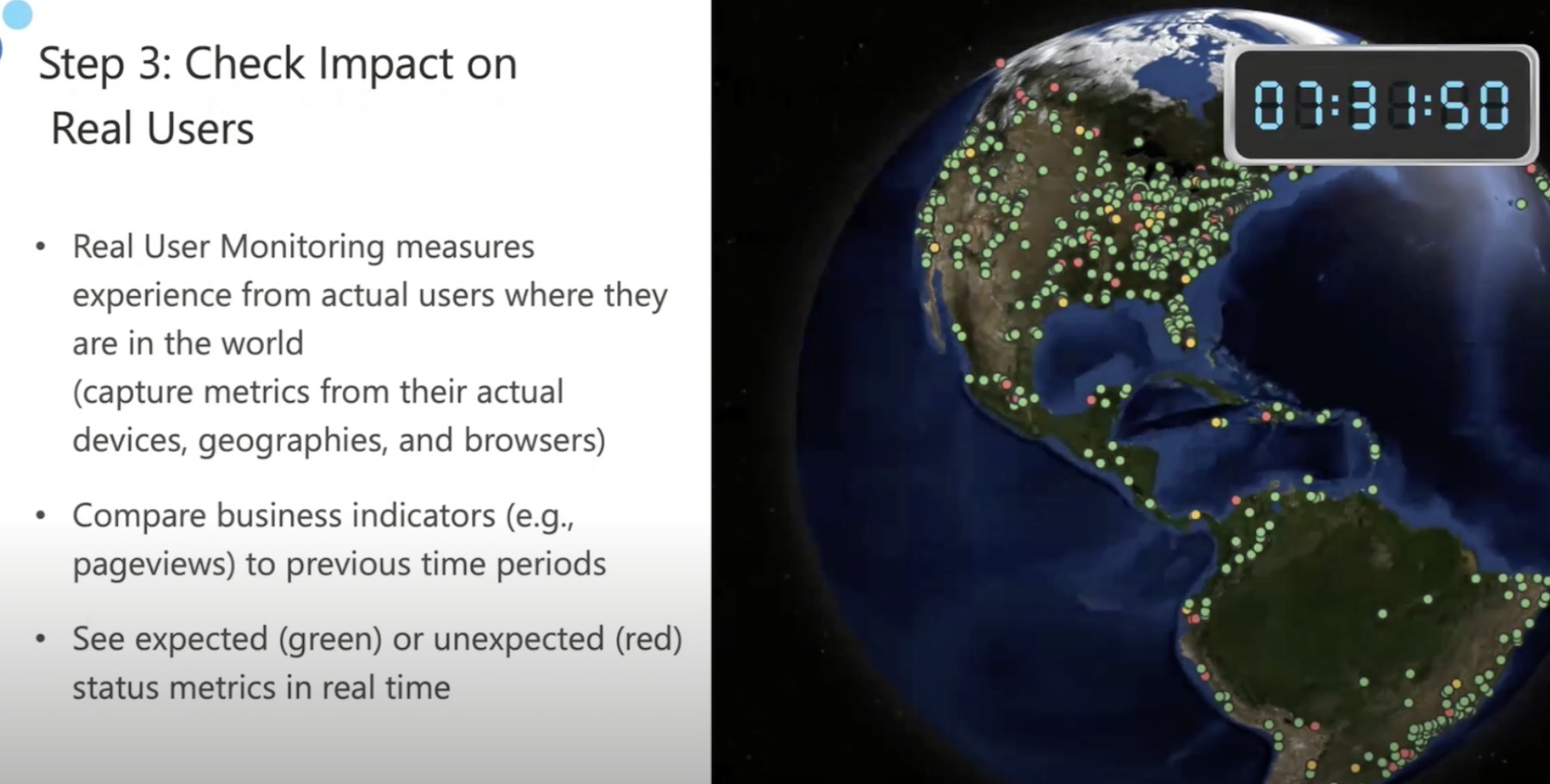The Internet was built to provide robust, best-effort communication between a small number of trusted hosts. Then it exploded in popularity and size. Our global network of networks was never really designed to be the backbone of worldwide commerce or many of the other current uses. Still, it has proven to be a great foundation. One that we’ve been building on top of in many ways for many years. These overlay networks have grown in popularity but not necessarily in openness. A new company, Syntropy, is out to change that. They aim to build a “user-centric Internet” by building a decentralized overlay network that is encrypted by default, optimized for performance, and accessible to developers.

Internet Inefficiencies
Let’s start by examining the current Internet (that’s right, I still capitalize it because it is the singular global network of networks). The Internet is the foundation for everything we do on the web, and these days almost all our communication as well. It works pretty darn good, but there are some issues. The Internet was built for resiliency, not efficiency. It was also built for connectivity, not security or privacy.
Resiliency comes largely from the Border Gateway Protocol (BGP), which is used to stitch together all the networks that make up the Internet. Without getting into details, BGP essentially ensures that your traffic crosses the least number of these networks to get where it’s going. While that may sound good, it does not necessarily lead to the best path in terms of available bandwidth, latency, jitter, or other quality of experience metrics. Of course, as your traffic crosses each of these networks, they apply their own internal routing policies. In aggregate, this is called “best effort” routing; meaning that your traffic will probably get where it’s going but there are no guarantees (especially about the quality of the delivery).
Connectivity comes from principals like Postel’s Law: Be conservative in what you send, be liberal in what you accept. This idea allows diverse devices and heterogeneous software to communicate over the Internet. What it does not provide is any inherent privacy or security of or for those communications. Clear text packets are open to eavesdropping, man in the middle attacks, and a slew of other nasty stuff.
On Overlays
It turns out we can fix many of these issues with an overlay. What’s an overlay? It’s a logical abstraction. More practically, it is a network built on top of another network. And it’s part of the basics of how all networks work. Think about the OSI model, how each layer rides on top of the layer below, but with a different topology at each layer. And how each layer adds an additional header, creating a logical tunnel for the traffic from the layer above. This can be an abstract concept, so if you want to dig deeper, check out this talk I gave at NANOG 75, back when in-person conferences were still a thing:
This doesn’t need to be super complicated. You are already doing this. Every time you visit a website with an “https” link, you are using Transport Layer Security (TLS), which effectively creates an encrypted tunnel between your browser and the web server hosting that website. That’s an overlay that creates privacy and security for the traffic you exchange with that site. Companies are already using overlays like this on a massive scale.
Overlays aren’t just about security and privacy; they are also about efficiency and quality of experience. With an overlay, you can both encrypt your traffic and direct the path it takes to get where it’s going. With an overlay network, you can optimize for things other than the “shortest” path and take control of how your traffic is delivered. MPLS is a way to do this within your own WAN. VxLAN is a way to do it in your own data center.
Many companies are building overlays that other companies can take advantage of. SD-WAN is an overlay network. Content Delivery Networks (CDNs) use all kinds of proprietary algorithms and other technology to find the most efficient path to get content to the end-user. Of course, VPNs and now SDP are all overlay networks built for security. But while these services are available, they can be expensive and exclusive. To take advantage of a CDN, you must (obviously) be a customer of that CDN.
What if there was another way to build an overlay network? A more decentralized, distributed, and universal overlay for the entire Internet, open to all?
The Stack
I recently spoke with Jonas Simanavicius, co-founder and CTO at Syntropy, a company that just announced the public release of its product in January 2021. You may have heard of this team’s earlier activity under the original project moniker, NOIA Network. In any case, I came away from that conversation energized and excited. It is possible that Syntropy just might be the answer to those questions I posed above. They call it a “user-centric internet” and I’m intrigued.
Essentially, Syntropy aims to be an overlay for the entire Internet, open to all. Of course, it’s encrypted. What’s more interesting is the performance optimization. It uses a network of globally distributed relay routers. These virtual routers not only act as waypoints for traffic as it traverses the Syntropy overlay, they also actively test the possible Internet paths between themselves and across the entire network. They do this both by watching production traffic and by sending one-way “pulses.”
The result of this constant testing of the paths available within the Syntropy overlay network is optimized performance. Instead of allowing BGP and the networks that make up the Internet to determine the path traffic takes, Syntropy uses its own Distributed Autonomous Routing Protocol (DARP) to route traffic through the right combination of relay routers to provide the best possible end-to-end experience.
As I mentioned above, CDNs and others (e.g., hyperscale cloud operators) already use similar techniques in their own networks to provide optimized routing – what’s new here is the open access. Any Internet-connected machine, virtual or physical, can run the Syntropy agent. In fact, they have a full Syntropy Stack that, as they say, “provides teams the ability to seamlessly create, automate, scale, and optimize encrypted connections between any devices or services running on a cloud, on-premises, or edge location.”
The Chain
Ok, so it seems that Syntropy may have created a “platform to connect any networked device” as Simanavicius called it in our recent chat. But I’m sure you’re asking the same question I am: “If Syntropy the organization operates and controls this overlay network, no matter how cool and developer-centric it is, isn’t it just another centrally managed and proprietary network?”
That’s where the chain comes in. If you guessed that it’s a blockchain, you win a smile and a wink. Maybe some finger guns. The next step in creating a truly user-centric network layer is to decentralize and democratize. And that is exactly what Simanavicius and the team are focused on. They’ll be turning their API into a smart contract and they’ll be using tokens to fund a truly decentralized network.
It turns out that DARP is blockchain-based, and it uses what they call the NOIA token. This is interesting because it facilitates a market for connectivity. That means that applications or other services running on Syntropy can pay for network usage in NOIA. Those payments go to the folks who will operate relay routers (nodes), providing an incentive for third parties to expand the overlay network with additional nodes.
Syntropy describes it like this: “Our native digital asset allows this ecosystem to create its own decentralized economy, one supported by tens of thousands of community members running node infrastructure, with developers incentivized to deliver applications and software on top of our network.”
The Giants
With claims as big as these, it’s natural to have doubts. That’s why we always tend to look at the pedigree of the founders and early advisors in any start-up looking to put a ding in the universe. Syntropy was started by a co-founder of Equinix and alums of companies such as JP Morgan, and they’ve already formalized relationships with tech giants like Cisco.
More recently, they’ve added two individual giants (Shawn Hakl, former SVP at Verizon, and Roman Pacewicz, former Chief Product Officer at AT&T) to the team as advisory board members. Syntropy CEO Domas Povilauskas expressed his excitement about this by emphasizing that “the Syntropy vision extends far beyond any individual application, and with talent like Shawn and Roman, we’re establishing a critical mass of human capital needed to overcome the greatest challenges in internet infrastructure today.”
The Bottom Line
The Internet is a great foundation. But like all foundations, it becomes more valuable when you build something amazing on top of it. Companies, organizations, and individuals have been doing exactly that for years, with all kinds of overlay networks for all sorts of purposes. Now, a new company, Syntropy, promises to build one for (and with) all of us. I, for one, am intrigued; and I’ll be watching.






Very good article.